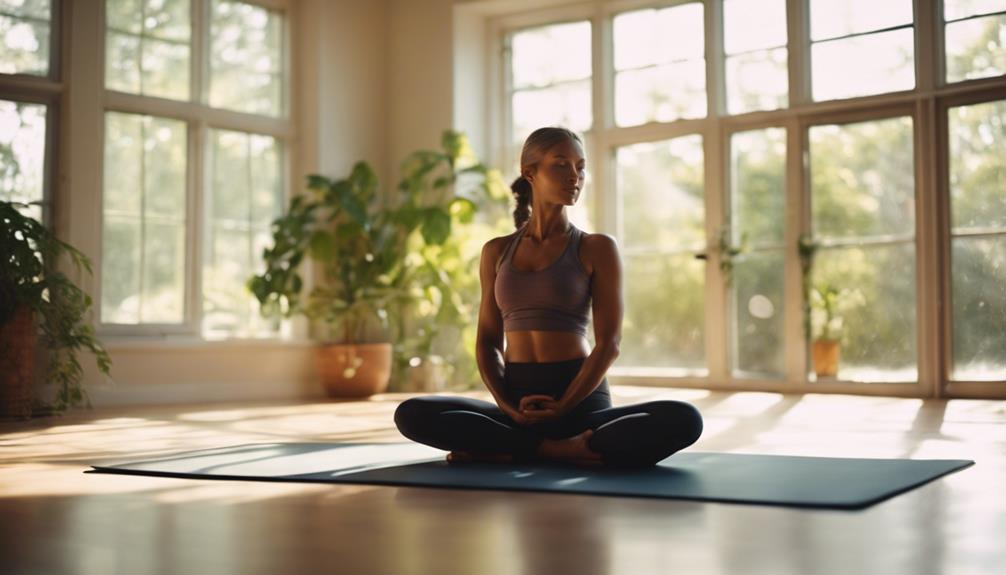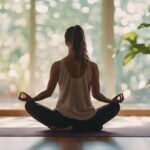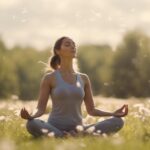Yin Yoga has gained popularity as a restorative practice that encourages deep relaxation and flexibility. When combined with the calming ambiance of candlelight, it becomes an immersive experience that enhances both the physical and mental aspects of yoga. In this article, we will explore the intricacies of Yin Yoga by candlelight, offering insights into its benefits, preparation, and techniques to help practitioners maximize their experience.
Understanding Yin Yoga: A Gentle Approach to Stretching
Yin Yoga is characterized by its focus on passive stretching, targeting the deep connective tissues of the body, such as ligaments and fascia. Unlike more dynamic styles of yoga, which emphasize muscle engagement and strength, Yin Yoga invites practitioners to hold poses for longer periods—typically three to five minutes. This gentle approach allows for a deeper release of tension and promotes increased flexibility, making it accessible to individuals of all levels.
The philosophy behind Yin Yoga stems from traditional Chinese medicine, which emphasizes the flow of energy, or "Qi," through the body’s meridians. By practicing Yin Yoga, individuals can cultivate a sense of balance between effort and ease, facilitating a meditative state that fosters self-awareness and introspection. The slower pace encourages practitioners to turn inward, making it an ideal practice for anyone seeking mental clarity and emotional stability.
The Benefits of Practicing Yin Yoga by Candlelight
Practicing Yin Yoga in a candlelit environment can enhance the overall experience by creating a soothing and serene atmosphere. The soft, flickering light of candles not only sets a calming mood but also encourages relaxation and mindfulness. This gentle lighting helps to minimize distractions, allowing practitioners to focus more on their breath and body sensations rather than external stimuli.
Additionally, the combination of candlelight and Yin Yoga can promote a deeper sense of calm and tranquility. Studies have shown that softer lighting can lower cortisol levels, the stress hormone, thus facilitating a more restful and restorative state. Practicing Yin Yoga by candlelight encourages individuals to slow down and connect with their bodies, making it an ideal practice for those dealing with stress, anxiety, or fatigue.
Creating the Right Atmosphere for Candlelight Yoga
To create a conducive atmosphere for Yin Yoga by candlelight, it is essential to consider the placement and type of candles used. Opt for unscented candles to avoid overwhelming the senses, and arrange them strategically around your practice space to provide soft illumination without creating harsh shadows. A mix of different candle heights can add visual interest and warmth to the environment.
In addition to candles, consider incorporating soft fabrics, such as blankets and cushions, to enhance comfort. Dimming the lights in the room further contributes to a cozy ambiance, allowing the gentle glow of the candles to take center stage. Playing soft, instrumental music or nature sounds in the background can also deepen the meditative quality of the practice, helping you to enter a state of relaxation more easily.
Essential Props for Your Yin Yoga Candlelight Session
Having the right props on hand can significantly enhance your Yin Yoga practice, especially in a candlelight setting. Essential props include yoga blocks, bolsters, and blankets, which can provide support and comfort during long-held poses. Blocks can help modify poses to suit individual flexibility levels, while bolsters offer extra cushioning for relaxation.
Additionally, using eye pillows or soft masks can help create a sense of closure and relaxation, allowing practitioners to turn their focus inward. These props not only promote comfort but also encourage a deeper release of tension in the body, making it easier to hold poses for extended periods during your candlelight practice.
How to Prepare Your Space for Yin Yoga Practice
Preparing your space for a Yin Yoga candlelight session involves decluttering the area and creating a peaceful environment. Start by clearing away any unnecessary items that could distract you during your practice. A clean, organized space fosters a sense of clarity and calm, allowing you to focus fully on your experience.
Next, consider the temperature and ventilation of your practice area. A comfortable room temperature is important for relaxation, as is ensuring good airflow. Once your space is prepared, take a moment to set your intentions for the practice. This can involve light stretching, deep breathing, or journaling about your goals for the session, helping you to enter the practice with a clear and purposeful mindset.
The Role of Breath in Yin Yoga Candlelight Classes
Breath plays a crucial role in Yin Yoga, guiding practitioners through poses and enhancing relaxation. In candlelight classes, the focus on breath becomes even more significant, as the calming environment encourages deeper and more mindful inhalations and exhalations. Practitioners are encouraged to use their breath to acknowledge sensations in the body, which can facilitate a deeper release and greater emotional awareness.
Integrating breathwork into your practice can be as simple as pairing each inhale and exhale with movements or poses. Observing the rise and fall of the breath can create a meditative rhythm, allowing individuals to remain present in the moment. As you settle into poses, consciously directing your breath can help ease discomfort and tension, further enhancing the restorative benefits of Yin Yoga.
Key Poses to Include in a Candlelight Yin Yoga Session
In a Yin Yoga practice, specific poses can be particularly beneficial for promoting relaxation and releasing tension. Widely practiced poses include the Butterfly, where the feet are brought together and the torso is gently folded forward, and the Sphinx, which opens the heart and stretches the front body. Other effective poses include the Dragon, which targets the hips, and the Supported Child’s Pose, fostering a sense of safety and surrender.
Holding these poses for several minutes allows the body to open and release deeply held tension. In a candlelight setting, the calming ambiance enhances the experience, encouraging deeper introspection and connection with the body. Practitioners are encouraged to listen to their bodies and adjust poses as needed, using props for additional support.
Meditation and Relaxation Techniques for Yin Yoga
Incorporating meditation and relaxation techniques into your Yin Yoga practice can deepen the experience of stillness and self-awareness. Techniques such as body scanning involve tuning into different parts of the body, noticing sensations without judgment. This practice encourages mindfulness and can enhance the relaxation response during longer-held poses.
Additionally, visualization techniques can be effective during a candlelight Yin Yoga session. Practitioners may imagine a warm light enveloping them or visualize stress melting away as they breathe deeply. These techniques foster a deeper connection to the breath and body, enhancing the overall meditative quality of the practice.
Common Mistakes to Avoid in Yin Yoga Practice
While Yin Yoga is generally gentle, practitioners can inadvertently make mistakes that hinder their progress. One common mistake is forcing the body into poses without adequate preparation or awareness. It is essential to listen to your body and respect its limits; pushing too hard can lead to injury or discomfort, especially in a practice focused on relaxation and release.
Another mistake is neglecting the breath. Breath is a vital component of Yin Yoga, and forgetting to focus on it can detract from the overall experience. Practitioners should aim to cultivate a consistent breath throughout their practice, using it as a tool to deepen their awareness and enhance relaxation. Taking mindful breaths in candlelight can transform the practice into a more enriching experience.
Integrating Mindfulness with Your Candlelight Yoga Routine
Mindfulness is a key aspect of Yin Yoga, especially when practiced in candlelight. To integrate mindfulness into your routine, begin each session by setting an intention or dedicating your practice to a specific thought or feeling. This intention serves as a focal point throughout the session, anchoring your awareness as you move through poses.
During your practice, pay attention to your thoughts and emotions without judgment. Acknowledge distractions as they arise, gently guiding your focus back to your breath and body. This practice of mindfulness not only enhances the benefits of your Yin Yoga session but also encourages greater emotional clarity and resilience in daily life.
Practicing Yin Yoga by candlelight offers a unique blend of relaxation, meditation, and physical stretching, allowing individuals to reconnect with themselves in a peaceful environment. By understanding the principles of Yin Yoga and incorporating the right techniques, practitioners can create a fulfilling experience that promotes emotional well-being and physical flexibility. As you embark on your candlelight journey, embrace the stillness, connect with your breath, and allow yourself to fully immerse in the restorative powers of this gentle practice.


